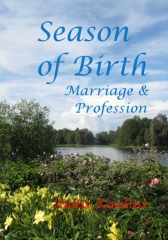As we previously predicted at LawPundit on the basis of the oral arguments to the case, the U.S. Supreme Court decided unanimously in favor of the patent holder in Bowman v. Monsanto Co., holding as follows in an opinion by Justice Kagan:
Crossposted from LawPundit.
"Under the doctrine of patent exhaustion, the authorized sale of a patented article gives the purchaser, or any subsequent owner, a right to use or resell that article. Such a sale, however, does not allow the purchaser to make new copies of the patented invention. The question in this case is whether a farmer who buys patented seeds may reproduce them through planting and harvesting without the patent holder’s permission. We hold that he may not."The Court ALSO stated by way of limitation as follows:
"Our holding today is limited—addressing the situation before us, rather than every one involving a self-replicating product. We recognize that such inventions are becoming ever more prevalent, complex, and diverse. In another case, the article’s self-replication might occur outside the purchaser’s control. Or it might be a necessary but incidental step in using the item for another purpose. Cf. 17 U. S. C. §117(a)(1) (“[I]t is not [a copyright] infringement for the owner of a copy of a computer program to make . . . another copy or adaptation of that computer program provide[d] that such a new copy or adaptation is created as an essential step in the utilization of the computer program”). We need not address here whether or how the doctrine of patent exhaustion would apply in such circumstances. In the case at hand, Bowman planted Monsanto’s patented soybeans solely to make and market replicas of them, thus depriving the company of the reward patent law provides for the sale of each article. Patent exhaustion provides no haven for that conduct.By so doing, the Supreme Court took the simplest path of decision in this case and applied a clear legal standard to the undenied facts, as the Court should do, without problematical hair-splitting concurrences or dissents. Well done.
Crossposted from LawPundit.
